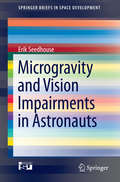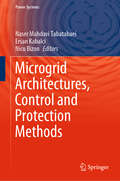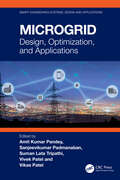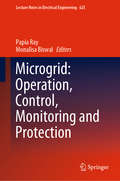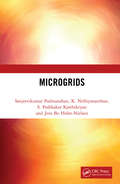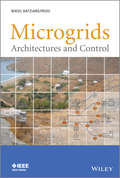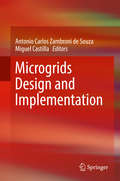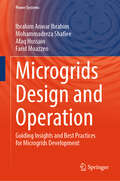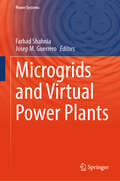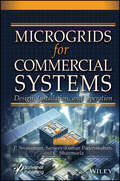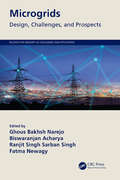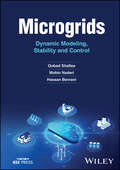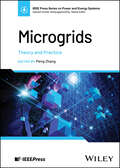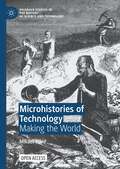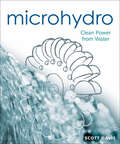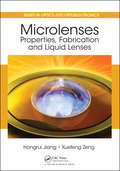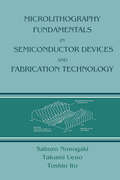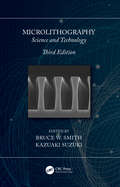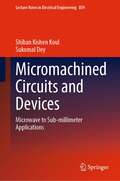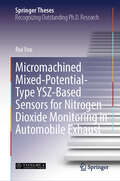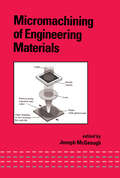- Table View
- List View
Microgravity and Vision Impairments in Astronauts
by Erik SeedhouseRecent missions on board the International Space Station have revealed previously unreported physiological consequences of long duration space flight, particularly in eyesight, and in this Brief Dr. Seedhouse reviews the existing theories on what causes this degeneration and how long it will last. Notably, 60% of long-duration crews have reported subjective degradation in vision, a clear indication that further study is necessary before astronauts embark on even longer-term space missions. Decreased near-visual acuity was reported in 46% of ISS/Mir crewmembers, resulting in a change of up to 2 dioptres in their refractive correction. It is possible that ophthalmic changes have been present since the first days of spaceflight, but had been attributed to other causes; this approach to the issue as well as other hypotheses are all presented in full to give a broad foundation of the existing knowledge on the topic. The changes have occurred at various times during a mission with varying degrees of visual degradation. Some cases resolved on return to Earth, but several crewmembers have not regained pre-flight visual acuity, indicating the damage may be permanent. One explanation of the syndrome has been attributed to hyperopic shift due to aging, but onboard analysis techniques, including visual acuity assessments, retinal imagery, and ultrasound examination of the eye, has led to the acceptance of a wider syndrome. In addition to vision changes, studies have reported flattening of the globe, swelling of the optic disc (papilledema), choroidal folds in the retina, swelling of the optic nerve sheath, and visual field defects. It is widely hypothesized that this spectrum of symptoms may be explained by an elevation of intracranial pressure (ICP). Establishing the provenance of this medical problem, monitoring its occurrence and resolving the symptoms for future long term space missions is a key challenge for space medicine. With this book, readers have an entry point for understanding the full scope of the problem and its possible origins.
Microgrid Architectures, Control and Protection Methods (Power Systems)
by Nicu Bizon Naser Mahdavi Tabatabaei Ersan KabalciThis book presents intuitive explanations of the principles of microgrids, including their structure and operation and their applications. It also discusses the latest research on microgrid control and protection technologies and the essentials of microgrids as well as enhanced communication systems.The book provides solutions to microgrid operation and planning issues using various methodologies includingplanning and modelling;AC and DC hybrid microgrids;energy storage systems in microgrids; andoptimal microgrid operational planning.Written by specialists, it is filled in innovative solutions and research related to microgrid operation, making it a valuable resource for those interested in developing updated approaches in electric power analysis, design and operational strategies. Thanks to its in-depth explanations and clear, three-part structure, it is useful for electrical engineering students, researchers and technicians.
Microgrid: Design, Optimization, and Applications (Smart Engineering Systems: Design and Applications)
by Vivek Patel Suman Lata Tripathi Sanjeevikumar Padmanaban Amit Kumar Pandey Vikas PatelThe book discusses principles of optimization techniques for microgrid applications specifically for microgrid system stability, smart charging, and storage units. It also highlights the importance of adaptive learning techniques for controlling autonomous microgrids. It further presents optimization-based computing techniques like fuzzy logic, and neural networks to enhance the computational speed.Features Discusses heuristic techniques and evolutionary algorithms in microgrids optimization problems Covers operation management, distributed control approaches, and conventional control methods for microgrids Presents intelligent control for energy management and battery charging systems Highlights a comprehensive treatment of power sharing in DC microgrids Explains control of low-voltage microgrids with master-slave architecture, where distributed energy resources interface with the grid by means of conventional current-driven inverters It is primarily written for senior undergraduates, graduate students, and academic researchers in the fields of electrical engineering, electronics, and communications engineering, computer science and engineering, and environmental engineering.
Microgrid: Operation, Control, Monitoring and Protection (Lecture Notes in Electrical Engineering #625)
by Papia Ray Monalisa BiswalThis book discusses various challenges and solutions in the fields of operation, control, design, monitoring and protection of microgrids, and facilitates the integration of renewable energy and distribution systems through localization of generation, storage and consumption.It covers five major topics relating to microgrid i.e., operation, control, design, monitoring and protection. The book is primarily intended for electric power and control engineering researchers who are seeking factual information, but also appeals to professionals from other engineering disciplines wanting an overview of the entire field or specific information on one aspect of it. Featuring practical case studies and demonstrating different root causes of large power failures, it helps readers develop new concepts for mitigating blackout issues.This book is a comprehensive reference resource for graduate and postgraduate students, academic researchers, and practicing engineers working in the fields of power system and microgrid.
Microgrids
by Jens Bo Holm-Nielsen Sanjeevikumar Padmanaban K. Nithiyananthan S. Prabhakar KarthikeyanMicrogrids offers a complete discussion and details about microgrids and their applications, including modeling of AC/DC and hybrid grids in a tied mode with simulation for the solar systems, wind turbines, biomass and fuel cells, and deployment issues. The data communications and control mechanism implementations are analyzed for proper coordination of the AC/DC microgrid. The various real-time applications and future development of the microgrid are also discussed in this book, with MATLAB®-based simulations and results. This book: Discusses the fundamentals of microgrids, the components of microgrids, the modeling of renewable energy sources, and the implementation of microgrids. Explores AC and DC microgrid modeling with real-time examples. Examines the effective extraction of energy from renewable energy sources. Covers analysis of data communications and control-mechanism implementations. Includes HOMER/MATLAB®-based simulations and results on microgrids. This book would be a welcome addition to the libraries of researchers, senior undergraduate students, and graduate students in power and electrical engineering, especially those working with smart and microgrids.
Microgrids
by Nikos HatziargyriouMicrogrids are the most innovative area in the electric power industry today. Future microgrids could exist as energy-balanced cells within existing power distribution grids or stand-alone power networks within small communities.A definitive presentation on all aspects of microgrids, this text examines the operation of microgrids - their control concepts and advanced architectures including multi-microgrids. It takes a logical approach to overview the purpose and the technical aspects of microgrids, discussing the social, economic and environmental benefits to power system operation. The book also presents microgrid design and control issues, including protection and explaining how to implement centralized and decentralized control strategies.Key features:original, state-of-the-art research material written by internationally respected contributors unique case studies demonstrating success stories from real-world pilot sites from Europe, the Americas, Japan and Chinaexamines market and regulatory settings for microgrids, and provides evaluation results under standard test conditionsa look to the future - technical solutions to maximize the value of distributed energy along with the principles and criteria for developing commercial and regulatory frameworks for microgridsOffering broad yet balanced coverage, this volume is an entry point to this very topical area of power delivery for electric power engineers familiar with medium and low voltage distribution systems, utility operators in microgrids, power systems researchers and academics. It is also a useful reference for system planners and operators, manufacturers and network operators, government regulators, and postgraduate power systems students.CONTRIBUTORSThomas DegnerAris DimeasAlfred EnglerNuno GilAsier Gil de MuroGuillermo Jiménez-EstévezGeorge KariniotakisGeorge KorresAndré MadureiraMeiqin MaoChris MarnayJose Miguel YarzaSatoshi MorozumiAlexander OudalovFrank van OverbeekeRodrigo Palma BehnkeJoao Abel Pecas LopesFernanda ResendeJohn RomankiewiczChristine SchwaegerlNikos SoultanisLiang TaoAntonis Tsikalakis
Microgrids Design and Implementation
by Antonio Carlos Zambroni de Souza Miguel CastillaThis book addresses the emerging trend of smart grids in power systems. It discusses the advent of smart grids and selected technical implications; further, by combining the perspectives of researchers from Europe and South America, the book captures the status quo of and approaches to smart grids in a wide range of countries. It describes the basic concepts, enabling readers to understand the theoretical aspects behind smart grid formation, while also examining current challenges and philosophical discussions. Like the industrial revolution and the birth of the Internet, smart grids are certain to change the way people use electricity. In this regard, a new term – the “prosumer” – is used to describe consumers who may sometimes also be energy producers. This is particularly appealing if we bear in mind that most of the distributed power generation in smart grids does not involve carbon emissions. At first glance, the option of generating their own power could move consumers to leave their current energy provider. Yet the authors argue that doing so is not a wise choice: utilities will play a central role in this new scenario and should not be ignored.
Microgrids Design and Operation: Guiding Insights and Best Practices for Microgrids Development (Power Systems)
by Ibrahim Anwar Ibrahim Mohammadreza Shafiee Afaq Hussain Farid MoazzenThis book delves into the evolving landscape of microgrids, offering a comprehensive guide on their design, operation, and integration within modern electrical networks. The subject of this book is microgrids, which are pivotal in the transition toward decentralised, decarbonised, and digitalised energy systems. The book is structured around several practical use cases, detailing the methods and results that will be of particular interest to readers, such as optimisation of power flow, integration of distributed energy resources (DERs), and advanced energy management systems. It features an array of illustrations, tables, and diagrams that enhance the reader's understanding of complex concepts, along with a didactic approach that includes step-by-step guides and case studies of 30 microgrid projects from around the world. Readers will benefit from detailed insights into the economic, technical, and social aspects of microgrids, including their role in enhancing grid resilience, improving energy efficiency, and supporting renewable integration. The book also addresses the latest technological advancements, such as digital twins and machine learning applications, that are shaping the future of microgrid design and operation. It serves as a practical manual, providing frameworks and methodologies that can be applied in real-world scenarios to optimise microgrid performance. The unique combination of theoretical knowledge and practical experience makes this book a valuable resource for researchers, engineers, policymakers, and practitioners in the energy sector.
Microgrids and Other Local Area Power and Energy Systems
by Kwasinski, Alexis and Weaver, Wayne and Balog, Robert S. Alexis Kwasinski Wayne Weaver Robert S. BalogDescribing the formation, integration, planning, composition and operation of microgrids, this book explains how local power systems can address limitations in conventional electric power grids and provides insights into the practical implementation needs and outcomes of microgrid technology. All aspects of microgrid design and applications are covered, including the main technologies involved in microgrids and other local area power and energy systems. The reliability and economic characteristics of microgrid system architecture, energy storage and grid interaction are explored in depth. Over 300 illustrations and real-world application examples make this a fully self-contained resource, ideal for graduate students and professionals in electrical, mechanical and chemical engineering and materials science.
Microgrids and Virtual Power Plants (Power Systems)
by Farhad Shahnia Josep M. GuerreroThis book highlights recent research advancements in the area of microgrids and virtual power plants. Microgrids and virtual power plants are the future of power generation and delivery systems, and there has been significant research interest in this area over the past decade. The key emphasis of this book is on the various modelling, analysis, and management aspects of microgrids and virtual power networks. Interesting topics such as their planning, operation, and technology accommodation are presented in detail. The chapters in the book discuss existing and new modelling approaches, control and management methods, as well as their structures, planning, monitoring, protection, and coordination. This book introduces and covers these topics in a comprehensive and coherent way for professionals and researchers.
Microgrids for Commercial Systems
by P. Sanjeevikumar P. Sivaraman C. SharmeelaMICROGRIDS for COMMERCIAL SYSTEMS This distinct volume provides detailed information on the concepts and applications of the emerging field of microgrids for commercial applications, offering solutions in the design, installation, and operation of this new, cutting-edge technology. The microgrid is defined as Distributed Energy Resources (DER) and interconnected loads with clearly defined electrical boundaries that act as a single controllable entity concerning the grid as per IEEE standard 2030.7-2017. It provides an uninterrupted power supply to end-user loads with high reliability. Commercial systems like IT/ITES, shopping complexes, malls, the banking sector, hospitals, etc., need an uninterrupted input power supply with high reliability. Microgrids are more suitable for commercial systems to service their clients with no service discontinuity. The microgrid enables both connection and disconnection from the grid. That is, the microgrid can operate both in grid-connected and islanded modes of operation. The microgrid controller plays an important role in microgrid systems. It shall have an energy management system and real-time control functions that operate in the following conditions: both grid-connected and islanded modes of operation, automatic transfer from grid-connected mode to islanding mode, reconnection and re-synchronization from islanded mode to grid-connected mode, optimization of both real and reactive power generation and consumption by the energy management system, grid support, ancillary services, etc. Whenever a microgrid is in islanded mode, it will work as an autonomous system without a distribution grid power supply. In this mode of operation, fault in the transmission or distribution grid will not propagate into the microgrid. Whenever a microgrid operates in grid-connected mode, power flows bi-directionally between the distribution grid and microgrid at the point of interconnection. Hence, microgrids ensure the interrupted power supply to the end-user loads with high reliability. This book aims to bring together the design, installation, operation, and new research that has been carried out in the field of microgrid applications for commercial power systems.
Microgrids: Advances in Operation, Control, and Protection (Power Systems)
by Nikos Hatziargyriou Behnam Mohammadi-Ivatloo Hamdi Abdi Amjad Anvari-MoghaddamThis book provides a comprehensive overview on the latest developments in the control, operation, and protection of microgrids. It provides readers with a solid approach to analyzing and understanding the salient features of modern control and operation management techniques applied to these systems, and presents practical methods with examples and case studies from actual and modeled microgrids. The book also discusses emerging concepts, key drivers and new players in microgrids, and local energy markets while addressing various aspects from day-ahead scheduling to real-time testing of microgrids. The book will be a valuable resource for researchers who are focused on control concepts, AC, DC, and AC/DC microgrids, as well as those working in the related areas of energy engineering, operations research and its applications to energy systems.Presents modern operation, control and protection techniques with applications to real world and emulated microgrids;Discusses emerging concepts, key drivers and new players in microgrids and local energy markets;Addresses various aspects from day-ahead scheduling to real-time testing of microgrids.
Microgrids: Design, Challenges, and Prospects (Big Data for Industry 4.0)
by Ghous Bakhsh Narejo Biswaranjan Acharya Ranjit Singh Sarban Singh Fatma NewagyThe book addresses the needs of researchers on the fundamentals as well as more advanced knowledge on microgrids and their evolution. This book covers newly emerging trends in fields such as Computer Science, Energy, Electrical Engineering, and Electronics and brings the reader up-to-date on the new emerging fields that play an important role in the power infrastructure. This book provides knowledge on decision making for newly evolving trends in microgrid design. It discusses techniques on how to improve the existing power quality and reduce load shedding and power imbalances. The book presents the emerging fields that now play an important role in microgrid design such as Data Science, Machine Learning, AI, and IT. The readership includes researchers, academia, practicing engineers, consumers, power companies and policy makers located across the globe.
Microgrids: Dynamic Modeling, Stability and Control
by Hassan Bevrani Qobad Shafiee Mobin NaderiMicrogrids Presents microgrid methodologies in modeling, stability, and control, supported by real-time simulations and experimental studies Microgrids: Dynamic Modeling, Stability and Control, provides comprehensive coverage of microgrid modeling, stability, and control, alongside new relevant perspectives and research outcomes, with vital information on several microgrid modeling methods, stability analysis methodologies and control synthesis approaches that are supported by real-time simulations and experimental studies for active learning in professionals and students alike. This book is divided into two parts: individual microgrids and interconnected microgrids. Both parts provide individual chapters on modeling, stability, and control, providing comprehensive information on the background, concepts, and architecture, supported by several examples and corresponding source codes/simulation files. Communication based control and cyber security of microgrids are addressed and new outcomes and advances in interconnected microgrids are discussed. Summarizing the outcome of more than 15 years of the authors’ teaching, research, and projects, Microgrids: Dynamic Modeling, Stability and Control covers specific sample topics such as: Microgrid dynamic modeling, covering microgrid components modeling, DC and AC microgrids modeling examples, reduced-order models, and model validation Microgrid stability analysis, covering stability analysis methods, islanded/grid connected/interconnected microgrid stability Microgrids control, covering hierarchical control structure, communication-based control, cyber-resilient control, advanced control theory applications, virtual inertia control and data-driven control Modeling, analysis of stability challenges, and emergency control of large-scale interconnected microgrids Synchronization stability of interconnected microgrids, covering control requirements of synchronous microgrids and inrush power analysis With comprehensive, complete, and accessible coverage of the subject, Microgrids: Dynamic Modeling, Stability and Control is the ideal reference for professionals (engineers, developers) and students working with power/smart grids, renewable energy, and power systems, to enable a more effective use of their microgrids or interconnected microgrids.
Microgrids: Theory and Practice (IEEE Press Series on Power and Energy Systems)
by Peng ZhangMicrogrids Understand microgrids and networked microgrid systems Microgrids are interconnected groups of energy sources that operate together, capable of connecting with a larger grid or operating independently as needed and network conditions require. They can be valuable sources of energy for geographically circumscribed areas with highly targeted energy needs, and for remote or rural areas where continuous connection with a larger grid is difficult. Microgrids’ controllability makes them especially effective at incorporating renewable energy sources. Microgrids: Theory and Practice introduces readers to the analysis, design, and operation of microgrids and larger networked systems that integrate them. It brings to bear both cutting-edge research into microgrid technology and years of industry experience in designing and operating microgrids. Its discussions of core subjects such as microgrid modeling, control, and optimization make it an essential short treatment, valuable for both academic and industrial study. Readers will acquire the skills needed to address existing problems and meet new ones as this crucial area of power engineering develops. Microgrids: Theory and Practice also features: Incorporation of new cyber-physical system technologies for enabling microgrids as resiliency resources Theoretical treatment of a wide range of subjects including smart programmable microgrids, distributed and asynchronous optimization for microgrid dispatch, and AI-assisted microgrid protection Practical discussion of real-time microgrids simulations, hybrid microgrid design, transition to renewable microgrid networks, and more Microgrids: Theory and Practice is ideal as a textbook for graduate and advanced undergraduate courses in power engineering programs, and a valuable reference for power industry professionals looking to address the challenges posed by microgrids in their work.
Microhistories of Technology: Making the World (Palgrave Studies in the History of Science and Technology)
by Mikael HårdIn this open access book, Mikael Hård tells a story of how people around the world challenged the production techniques and products brought by globalization. Retaining their autonomy and freedom, creative individuals selectively adopted or rejected modern gadgets, tools, and machines. In standard historical narratives, globalization is portrayed as an unstoppable force that flattens all obstacles in its path. Modern technology is also seen as inexorable: in the nineteenth century, steamships, telegraph lines, and Gatling guns are said to have paved the way for colonialism and other forms of dominating people and societies. Later, shipping containers and computer networks purportedly pulled the planet deeper into a maelstrom of capitalism. Hård discusses instances that push back against these narratives. For example, in Soviet times, inhabitants of Samarkand, Uzbekistan, preferred to remain in—and expand—their own mud-brick houses rather than move into prefabricated, concrete residential buildings. Similarly, nineteenth-century Sumatran carpenters ignored the saws brought to them by missionaries—and chose to chop down trees with their arch-bladed adzes. And people in colonial India successfully competed with capitalist-run Caribbean sugar plantations, continuing to produce their own muscovado and sell it to local consumers. This book invites readers to view the history of technology and material culture through the lens of diversity. Based on research funded by the European Research Council and conducted in the Global South, Microhistories of Technology: Making the World shows that the spread of modern technologies did not erase artisanal production methods and traditional tools.
Microhydro: Clean Power from Water
by Scott DavisMicrohydro features the smallest version of the renewable engery technology dubbed the simplest, most reliable and least expensive way to generate power off grid. Highly illustrated and practical, it is a complete guide to designing and constructing reliable hydroelectric power systems.
Microhydrodynamics and Complex Fluids
by Dominique Barthes-BieselA self-contained textbook, Microhydrodynamics and Complex Fluids deals with the main phenomena that occur in slow, inertialess viscous flows often encountered in various industrial, biophysical, and natural processes. It examines a wide range of situations, from flows in thin films, porous media, and narrow channels to flows around suspended partic
Microlearning in the Digital Age: The Design and Delivery of Learning in Snippets
by Joseph Rene CorbeilMicrolearning in the Digital Age explores the design and implementation of bite-sized learning and training in technology-enabled environments. Grounded in research-based best practices and a robust, eight-dimensional framework, this book applies the latest developments in mobile learning, social media, and instructional/multimedia design to one of today’s most innovative and accessible content delivery systems. Featuring experts from higher education, information technology, digital gaming, corporate, and other contexts, this comprehensive guide will prepare graduate students, researchers, and professionals of instructional design, e-learning, and distance education to develop engaging, cost-effective microlearning systems.
Microlenses: Properties, Fabrication and Liquid Lenses (Series in Optics and Optoelectronics)
by Hongrui Jiang Xuefeng ZengDue to the development of microscale fabrication methods, microlenses are being used more and more in many unique applications, such as artificial implementations of compound eyes, optical communications, and labs-on-chips. Liquid microlenses, in particular, represent an important and growing research area yet there are no books devoted to this top
Microlithography Fundamentals in Semiconductor Devices and Fabrication Technology
by Saburo Nonogaki Ueno Takumi Toshio Ito"Explores the science and technology of lithographic processes and resist materials and summarizes the most recent innovations in semiconductor manufacturing. Considers future trends in lithography and resist material technology. Reviews the interaction of light, electron beams, and X-rays with resist materials."
Microlithography: Science and Technology
by Bruce W. Smith Kazuaki SuzukiThe completely revised Third Edition to the bestselling Microlithography: Science and Technology provides a balanced treatment of theoretical and operational considerations, from fundamental principles to advanced topics of nanoscale lithography. The book is divided into chapters covering all important aspects related to the imaging, materials, and processes that have been necessary to drive semiconductor lithography toward nanometer-scale generations. Renowned experts from the world’s leading academic and industrial organizations have provided in-depth coverage of the technologies involved in optical, deep-ultraviolet (DUV), immersion, multiple patterning, extreme ultraviolet (EUV), maskless, nanoimprint, and directed self-assembly lithography, together with comprehensive descriptions of the advanced materials and processes involved. New in the Third Edition In addition to the full revision of existing chapters, this new Third Edition features coverage of the technologies that have emerged over the past several years, including multiple patterning lithography, design for manufacturing, design process technology co-optimization, maskless lithography, and directed self-assembly. New advances in lithography modeling are covered as well as fully updated information detailing the new technologies, systems, materials, and processes for optical UV, DUV, immersion, and EUV lithography. The Third Edition of Microlithography: Science and Technology authoritatively covers the science and engineering involved in the latest generations of microlithography and looks ahead to the future systems and technologies that will bring the next generations to fruition. Loaded with illustrations, equations, tables, and time-saving references to the most current technology, this book is the most comprehensive and reliable source for anyone, from student to seasoned professional, looking to better understand the complex world of microlithography science and technology.
Micromachined Circuits and Devices: Microwave to Sub-millimeter Applications (Lecture Notes in Electrical Engineering #859)
by Shiban Kishen Koul Sukomal DeyThis book presents the design of different switching and resonant devices using the present state-of-the-art radio frequency (RF) micromachining (MEMS) technology. Different topologies of MEMS switches have been discussed considering optimum performances over microwave to millimeter wave frequency range. Wide varieties of micromachined switching networks starting from single-pole-double-throw (SPDT) to single-pole-fourteen-throw (SP14T) are discussed utilizing vertical and lateral actuation movements of the switch. Different transduction mechanisms of micromachined resonators are highlighted that includes capacitive, piezoelectric, and piezoresistive types. The book provides major design guidelines for the development of MEMS-based digital phase shifters, tunable filters, and antennas with extensive measurement data. Apart from the radio frequency (RF) requirements, an extensive guideline is given for the improvement of the reliability of micromachined switches and digital phase shifters where multiple switches are operating simultaneously. It takes multiple iterations and extensive characterizations to conclude with a reliable MEMS digital phase shifter, and these aspects are given one of the prime attentions in this book. Detailed performance analysis of metamaterial inspired MEMS switches is then discussed for application in millimeter wave frequency bands up to about 170 GHz. The book concludes with future research activities of RF MEMS technology and its potential in space, defense, sensors, and biomedical applications.
Micromachined Mixed-Potential-Type YSZ-Based Sensors for Nitrogen Dioxide Monitoring in Automobile Exhaust (Springer Theses)
by Rui YouThis book presents original methods to facilitate the development of micro-mixed-potential-type nitrogen dioxide sensors, especially in the following aspects: (i) improvement of sensing performance of electrodes; (ii) enhancement of chemical activity of reaction interface; (iii) development of advanced flexible low-power-consumption mixed-potential-type YSZ-based nitrogen dioxide sensors. Miniaturized sensors have steadily emerged into the commercial marketplace as competitive alternatives for monitoring and controlling the pollution gas in automobile industry. Despite the great potential, the real-world applications for most conventional micro-nitrogen dioxide sensors are still limited due to insufficient sensitivity, unacceptable cost, and the lack of robustness under harsh environmental disturbances. To address the issue, micro-nitrogen dioxide sensors based on mixed potential solid electrolyte is an ongoing area of great academic and technological interest. This book is expectedto be a guide for researchers on the way forward to chase future horizons in the fields of instrumentation, electrochemistry and micro/nano-electronics.
Micromachining of Engineering Materials (Mechanical Engineering)
by J.A. McGeoughExplaining principles underlying the main micromachining practices currently being used and developed in industrial countries around the world, Micromachining of Engineering Materials outlines advances in material removal that have led to micromachining, discusses procedures for precise measurement, includes molecular-level theories, describes vapo
